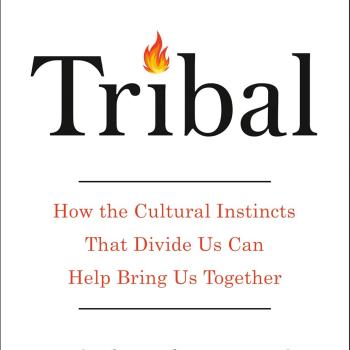In Part 1, we looked are Elbert Smith’s Church Planting by the Book to consider ways that missionaries sometimes misapply or misinterpret the Bible when talking about mission practice. Perhaps they want to find biblical support for “best practices.”
However, when sincere interpreters settle for superficial readings, they subtly teach poor interpretation methods. Likewise, I highlighted the danger of borrowing biblical language to defend mission strategies.

In this post, we’ll look again at Smith’s book to observe other ways that good missionaries can get the Bible wrong. As I mentioned in Part 1, I have the utmost respect for Smith. Because he desires that we interpret the Bible correctly, I use his book to illustrate how and why we need to critique the work of our peers so that we might improve our theology and mission strategy.
Co-opting Contemporary Language
Smith claims that Paul in Acts 13 uses a “creation-to-Christ” story to evangelize. He says, “Sent-out ones combine short (one- to two-minute) overviews of Old Testament stories that combine to provide the overarching story of the Old Testament” (p. 69).
I’m a big advocate for proclaiming the Bible’s “grand narrative.” But Smith’s explanation far too simplistically equates the Bible with modern church planting methods.
He mentions three examples of “creation-to-Christ” stories, i.e., Acts 7:2–50; 13:16–23; 17:24–31. Acts 13 makes no mention of creation. Acts 7 is more of an apologetic than a gospel proclamation. The primary audience in Acts 7, 13 were people familiar with the OT. The overviews serve distinct functions. By contrast, Acts 17:24–31 is primarily addressed to Gentiles unfamiliar with Jewish “theology.” Paul highlights God as Creator but hardly summarizes the Old Testament.
Various contemporary tools explicitly go by the name “Creation-to-Christ.” Perhaps the most prominent one looks nothing like the above examples. It was written for East Asian animists who know nothing of the Old Testament.
By labeling such biblical texts as “Creation-to-Christ” stories, Smith muddies the verbal waters.
Simplicity Without Significance
In Church Planting by the Book, Smith explains his ideas with simplicity. However, these explanations obscure the texts’ significance. A few additional examples will reinforce the point.
Smith explains what he calls the “Person of Peace Model” (pp. 136–38). The name borrows from Matthew 10:14; Mark 6:11. Smith suggests that Paul in Acts 18 uses this model,
Paul did not respond to people’s resistance by building relationships with them and patiently waiting until they responded to the gospel. He moved on and found a person who was ready to receive the message. (p. 139)
Smith does not account for the context. Paul (as with Jesus’ disciples in the Gospels) addressed an audience that was already thoroughly familiar with the Jewish background for Paul’s message. Even the Gentiles in this context had sufficient knowledge to grasp the significance of Paul’s preaching. According, those who heard Paul and Jesus’ disciples understood what they rejected.
By contrast, modern-day Gentiles typically lack such familiarity and often reject a message they do not fully understand. We not only should reconsider whether these descriptive passages are prescriptive but also whether the ancient and contemporary situations are analogous.
Finally, Smith writes,
Acts 16:5 says that the churches “were increasing in number daily.” It may be that the number of believers in each church was increasing, but the more natural reading of this verse seems to say that the number of churches was increasing. God’s Word describes churches that are increasing in number.” (p. 103)
Why make this assumption?
“They” could just as well refer to the believers within the churches (Acts 2:47). Why the concern? In recent years, countless missions books and articles champion methodologies that seem to prioritize rapidity above other concerns. This imbalance undermines well-rounded discipleship. People could easily use Smith’s speculation to advocate rapidity-focused approaches.
The desire to simplify God’s word for hearers is admirable; yet, our good intentions do not justify every use of Scripture.
Right Message, Wrong Text?
Someone might ask, “Does it matter? What practical difference does Smith’s interpretation make?” And, yes, I’ve actually heard this kind of retort many times.
This is precisely the wrong question. It illustrates the tremendous unhealth among missionaries. Pragmatics should not diminish our concern that God’s word be rightly interpreted. We should never be apathetic when missions books routinely lack exegetical rigor.
Missionaries are called to share the full counsel of God among the nations. They do this because they believe the Bible is God’s message for the world. Should we then be content that books offer a right message even while using wrong texts? Given our fallibility, each of us is prone to make mistakes and misinterpret passages.
However, if this pattern is consistent and perhaps systemic, the consequences are serious. Over time, we will increasingly disregard the authority of Scripture by yielding to pragmatism and philosophy. How we teach will subtly undermine what we teach.
What examples have you seen? Would you list any other problematic tendencies?
To check out Part 1, click here. For related posts and articles, see












